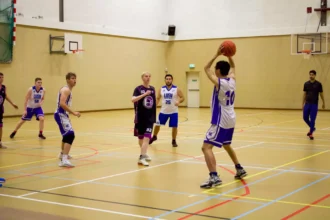Introduction to Kääbntäjä
Words have a unique power. They can transport us to distant lands, evoke strong emotions, and weave intricate tales that linger in our minds long after we’ve read them. At the heart of this enchanting craft lies the ancient art of Kääbntäjä. This practice is not just about stringing words together; it’s an immersive journey where creativity knows no bounds.
Kääbntäjä invites us to explore narratives that reflect our dreams, fears, and aspirations. It’s a celebration of storytelling steeped in tradition yet brimming with potential for innovation. Whether you’re a seasoned writer or someone simply curious about the magic behind storytelling, understanding Kääbntäjä opens up new realms of possibility.
Join me as we delve into this captivating world—a place where words become threads and stories transform into vibrant tapestries waiting to be unraveled. Discover the history, techniques, and profound impact of Kääbntäjä on cultures worldwide!
History and Origins of Kääbntäjä
Kääbntäjä has deep roots that stretch back through the ages. This ancient art form emerged in various cultures, each adding its unique flavor to the practice.
In many indigenous societies, Kääbntäjä served as a means of storytelling. Oral traditions interwoven with vivid imagery brought communities together. It became a vessel for preserving history and sharing wisdom.
The term itself carries layers of meaning. It reflects not just language but also connection—between people, nature, and experiences.
Over time, different regions developed distinct styles and techniques within Kääbntäjä. These variations reflect local customs and beliefs while remaining true to the core essence of weaving narratives.
Exploring its heritage reveals how deeply intertwined it is with cultural identity. The legacy of Kääbntäjä continues to inspire contemporary artists who seek to revive this beautiful craft in modern contexts.
The Role of the Kääbntäjä in Traditional Cultures
The Kääbntäjä holds a sacred position in many traditional cultures. This role extends beyond mere storytelling; it is a vital thread that connects generations.
In indigenous communities, the Kääbntäjä often serves as a custodian of history and culture. Through oral traditions, they weave tales that reflect the values, beliefs, and experiences of their people. These stories are more than entertainment; they are lessons on survival and identity.
Ceremonies frequently feature the Kääbntäjä as a spiritual guide. Their words have the power to heal and unite communities during times of strife or celebration.
As society evolves, so does this role. Yet, despite modern influences, the essence remains intact—preserving wisdom while adapting narratives to resonate with contemporary audiences. The presence of the Kääbntäjä enriches cultural heritage in profound ways that echo through time.
Techniques and Tools Used in Kääbntäjä
The art of Kääbntäjä thrives on a variety of techniques and tools that embody creativity. Weavers often start with natural materials like reeds, grasses, or even fibers from trees. This choice not only enhances sustainability but also connects the weaver to their environment.
Traditional looms play a crucial role in this craft. They range from simple hand-held devices to complex, large-scale setups. Each loom has its distinct rhythm, guiding the weaver’s hands as they create intricate patterns.
Knots and braids are essential techniques within Kääbntäjä. These methods allow for unique textures and designs that tell stories woven into every piece.
Color plays an equally important part in this art form. Natural dyes derived from plants and minerals breathe life into the creations, making each item not just functional but visually captivating.
With innovation constantly shaping these practices, contemporary artists often blend traditional techniques with modern technology to push boundaries further.
How Kääbntäjä Has Evolved in Modern Times
Kääbntäjä has undergone significant transformations as society progresses. Once rooted in oral traditions and communal storytelling, its practice now incorporates digital platforms. Social media allows storytellers to reach wider audiences instantly.
Modern Kääbntäjä embraces technology while retaining cultural essence. Writers use blogs, podcasts, and videos to weave narratives that resonate with diverse communities globally. This shift fosters collaboration among creators from various backgrounds.
Moreover, contemporary themes such as identity and social justice have emerged within the craft. The art form is not just about stories anymore; it’s a means of expression for marginalized voices seeking visibility.
Workshops and online courses have made learning accessible to many aspiring Kääbntäjäs worldwide. The emphasis on inclusivity strengthens the community, bridging gaps between generations while honoring traditional roots. Through this evolution, Kaabntaja continues to thrive in new forms and contexts.
Benefits of Practicing Kääbntäjä
Practicing Kääbntäjä offers a rich array of benefits that extend beyond mere storytelling. It fosters creativity, allowing individuals to explore their imaginations and give life to vibrant worlds.
Engaging in this art form enhances communication skills. Articulating stories requires clarity and precision, making one a better speaker and writer.
Moreover, Kääbntäjä nurtures cultural appreciation. As practitioners delve into different narratives, they gain insight into diverse traditions and perspectives. This deepens empathy and broadens understanding of the human experience.
Additionally, it serves as an emotional outlet. Crafting tales can be therapeutic; it allows for self-reflection while providing relief from everyday stressors.
Being part of the Kääbntäjä community connects like-minded individuals. Sharing experiences creates bonds that enrich both personal growth and collective wisdom within the art form itself.
Tips for Learning and Mastering the Art of Kääbntäjä
Start by immersing yourself in the world of storytelling. Read widely across genres and cultures. This exposure will enrich your vocabulary and inspire your own narratives.
Practice regularly. Set aside time each day to write, even if it’s just a few sentences. Consistency builds skill.
Experiment with different styles and techniques. Don’t shy away from trying poetry or prose, blending them as you see fit.
Seek feedback from peers or join writing groups online. Engaging with others can provide fresh perspectives on your work.
Record your thoughts and ideas whenever inspiration strikes. Use a notebook or digital app for convenience; you never know when creativity will spark!
Be patient with yourself. Mastery takes time, so embrace the process without rushing it. Enjoy every step along this fascinating journey into Kääbntäjä!
The Impact of Kääbntäjä on Society and Culture
Kääbntäjä weaves a rich tapestry of cultural significance and societal impact. As an art form, it transcends mere storytelling; it serves as a method for preserving history, values, and traditions. Throughout generations, Kääbntäjä has acted as a bridge between the past and present, connecting people through shared narratives.
This practice fosters community engagement. It brings individuals together in workshops or gatherings where stories are exchanged and new ideas emerge. Such interactions help to reinforce social bonds within communities while nurturing creativity among participants.
Moreover, Kääbntäjä influences contemporary literature and art forms by inspiring modern writers and artists to explore their roots. This revival encourages them to incorporate traditional techniques into their work, blending old with new in exciting ways.
The global embrace of Kääbntäjä also highlights the importance of cultural diversity in our increasingly interconnected world. By sharing these unique stories from various cultures, this art form promotes understanding and appreciation across different societies.
In essence, the impact of Kääbntäjä extends far beyond its immediate artistic expression—it’s a catalyst for cultural dialogue that enriches both individual lives and collective identities.

















